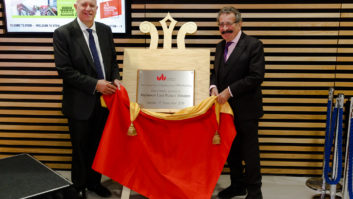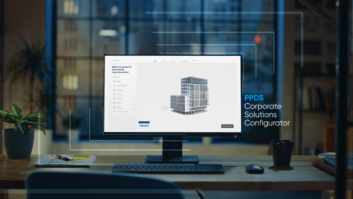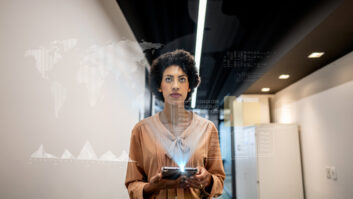New research from Kinly has found that while 27 percent of businesses are currently using AV to display art and culture, nearly two thirds of AV professionals (65 percent) believe that technology should be used for artistic or aesthetic purposes, not just functionality. This shift in the industry comes at a time when employees are demanding more aesthetically pleasing workplaces or taking their talent elsewhere.
In fact, nearly half (46 percent) of young UK workers aged 24-35 would consider quitting due to unattractive office design. Moreover, the data suggests that uninspiring design is also harming employee productivity and wellbeing, with over one-in-five (21 percent) young workers reporting that their mental health suffers due to poor-quality workplaces.
 That’s according to Kinly’s Art of Productivity report, which surveyed 1,000 UK office workers and 425 audio visual (AV) professionals across Europe. Kinly says the findings indicate that as businesses contend with talent shortages, productivity crises, and ongoing return-to-office debates, “workplaces designed without the employee experience in mind are exacerbating these issues”.
That’s according to Kinly’s Art of Productivity report, which surveyed 1,000 UK office workers and 425 audio visual (AV) professionals across Europe. Kinly says the findings indicate that as businesses contend with talent shortages, productivity crises, and ongoing return-to-office debates, “workplaces designed without the employee experience in mind are exacerbating these issues”.
However, the report also suggests that technology is fast becoming the solution:
AV and HR: a perfect pair
More than two thirds (69 percent) of AV teams are now working closely with HR departments to support wellbeing goals through tech. In fact, three in four AV professionals (75 percent) say that AV supports staff welfare, with more than half of businesses (51 percent) now deliberately using technology like digital signage to enhance the overall workplace experience.
Technology is also proving to be key in building more inclusive and supportive environments, Kinly says. Nearly a third of enterprises (31 percent) are actively using AV to support neurodiverse employees through accessibility-focused software or sensory-friendly design features, and almost half (46 percent) plan to follow suit.
Solving the hybrid working conundrum
Beyond aesthetics and inclusivity, AV technology is also essential for businesses looking to maximise hybrid working models, the report suggests. As well as keeping employees connected, 71 percent of AV professionals believe AV plays a role in building community across offices and remote teams.
Tom Martin, CEO at Kinly, said: “Creative environments fuel performance. Office design is no longer just an aesthetic choice, it’s a strategic one. Businesses have to give employees the tools they need to thrive, and that includes an environment where they feel empowered and inspired. The office has become a second-choice experience for many employees, but implementing technology creatively can and will make a difference, both in terms of boosting office attendance and improving overall output.”
Ben Sheppee, British visual artist, added: “Remote work has opened up new ways for creative collaboration. But without the right tools, it can actually stifle the creative process and leave people feeling disconnected. As hybrid work becomes the norm, it’s vital that businesses provide the technology to help ideas flow freely, no matter where their teams are.”
Kinly described its methodology: The report was based on original research with 425 AV professionals working at enterprises across the UK, Germany, the Netherlands, and the Nordics. The study also surveyed a nationally representative sample of 1,000 UK office workers aged 18 and above, including a balanced cross-section of sectors, job roles, and regions in the UK. Respondents were asked a series of questions about their attitudes toward workplace design, environment, and wellbeing, as well as their emotional responses to a range of visual artworks.
In addition, a separate facial recognition study was conducted using AI-powered emotion tracking software. Participants were shown a curated selection of famous digital artworks, including Van Gogh’s Starry Night, Monet’s Sunflowers, and Kandinsky’s Blue Rider, in a workplace environment. Facial expressions and micro-emotional responses (e.g., indicators of focus, relaxation, and engagement) were measured in real time and correlated with self-reported perceptions of creativity and concentration.
To explore the full Art of Productivity report to learn how organisations can improve employee output using creative applications of AV technology, visit the Kinly website here.







